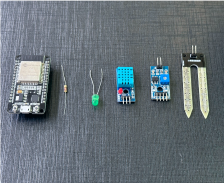
Let your garden thrive with EzloPi smart soil monitoring!
Soil Monitoring using moisture sensor, DHT11 and LED
1. About this example
In this example, we have designed a soil monitoring system by utilizing the soil moisture sensor and DHT11, is a practical and efficient project aimed at helping gardeners, hobbyists and farmers to monitor and maintain optimal soil conditions for plant growth.
This project leverages the capabilities of the EzloPi device, which acts as the central control hub to control, collect and display data from the various sensors used. Users will also receive notifications or alerts through the EzloPi device when critical conditions or thresholds are met.
2. Project Video Demonstration
Welcome to the project demonstration video section. The following video showcases the key aspects of Soil Monitoring using moisture sensor, DHT11 and LED, providing a visual walkthrough of its implementation.
3. Circuit Setup & Interfacing
The following components are required for interfacing with the EzloPi device:
- ESP32 as an EzloPi smart device.
- DHT11 Digital Temperature and Humidity Sensor.
- FC-28 Soil Moisture Sensor Module.
- LED with a current-limiting resistor of 100 Ohm.
The wiring diagram of ESP32 30 pin is represented as follows:
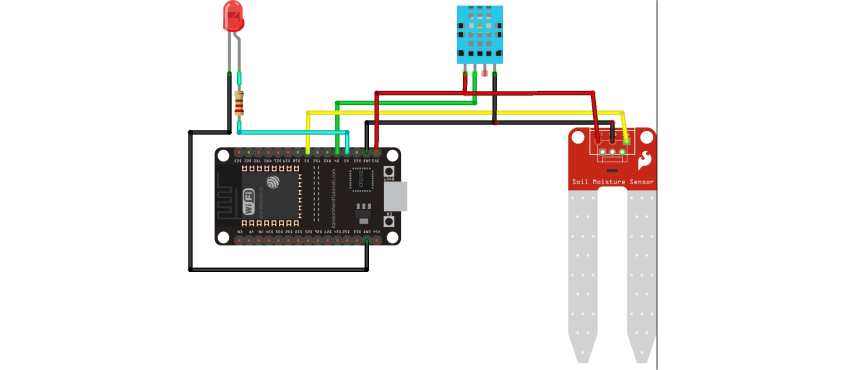
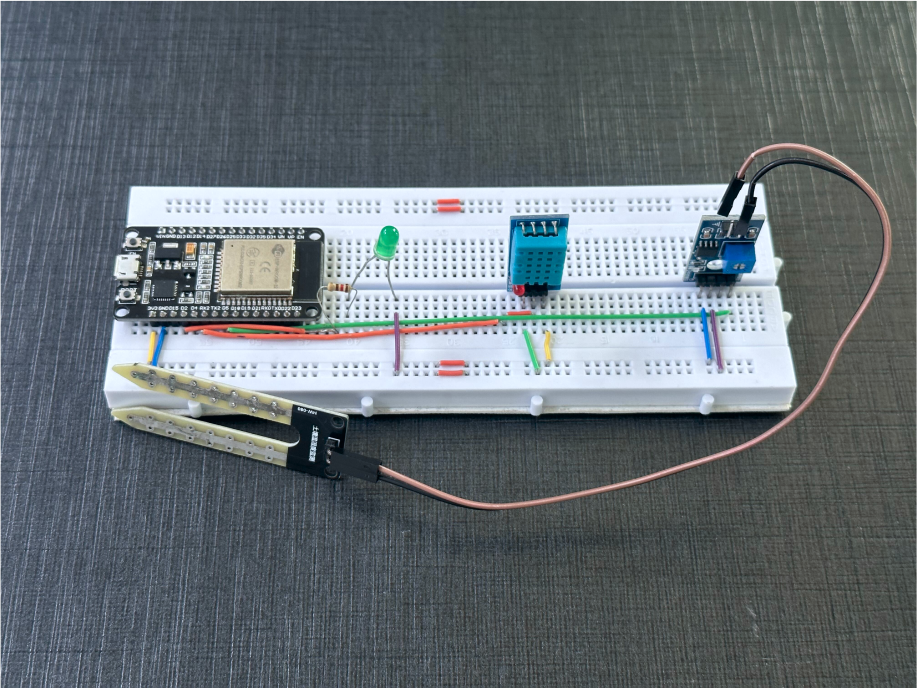
The following connections are made in order to complete the circuit setup.
From ESP32 (30 pins) to the DHT11, Soil Moisture Sensor and LED:
- Connect the GND from the ESP32 to the GND (black) of DHT11, soil moisture sensor , LED cathode (small leg).
- Connect the 3V3 pin from the ESP32 to the Vin pin of DHT11 and soil moisture sensor.
- Connect the D2 pin from the ESP32 to the 100 ohm resistor and connect the resistor to the Anode (larger leg)
- of LED.
- Connect the D4 pin from the ESP32 to the DHT11’s Data pin.
- Connect the D5 pin from the ESP32 to the Signal pin of the soil moisture sensor.
4. Interfacing the Soil moisture sensor, DHT11 and LED using EzloPi Web Flasher
1. Set up your device/hardware by visiting config.ezlopi.com
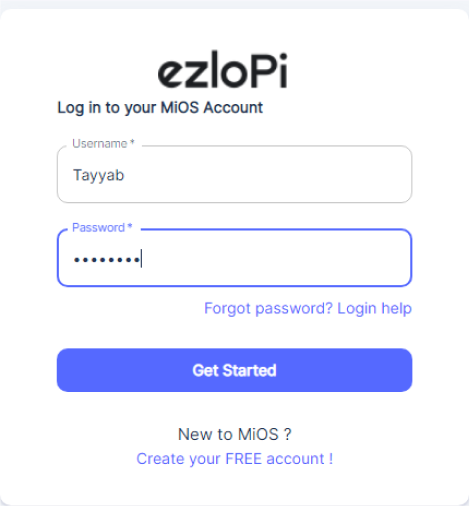
- Log in using the credentials which you just set earlier while signing up.
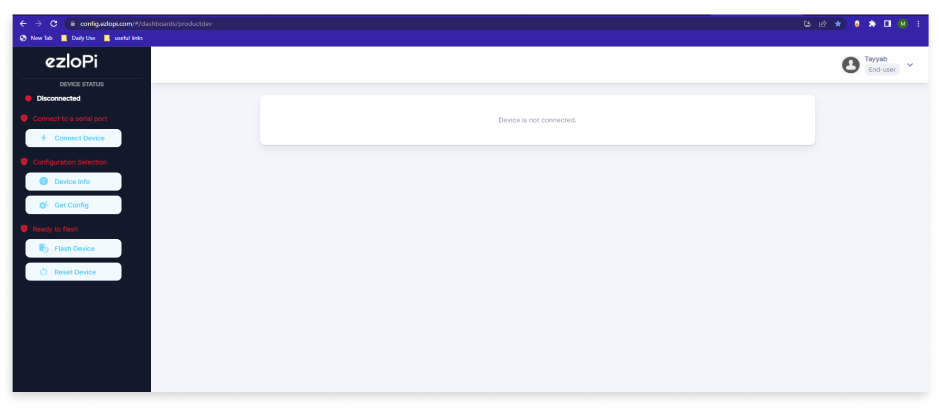
- Now, click on the Connect Device button and a pop-up window will appear.
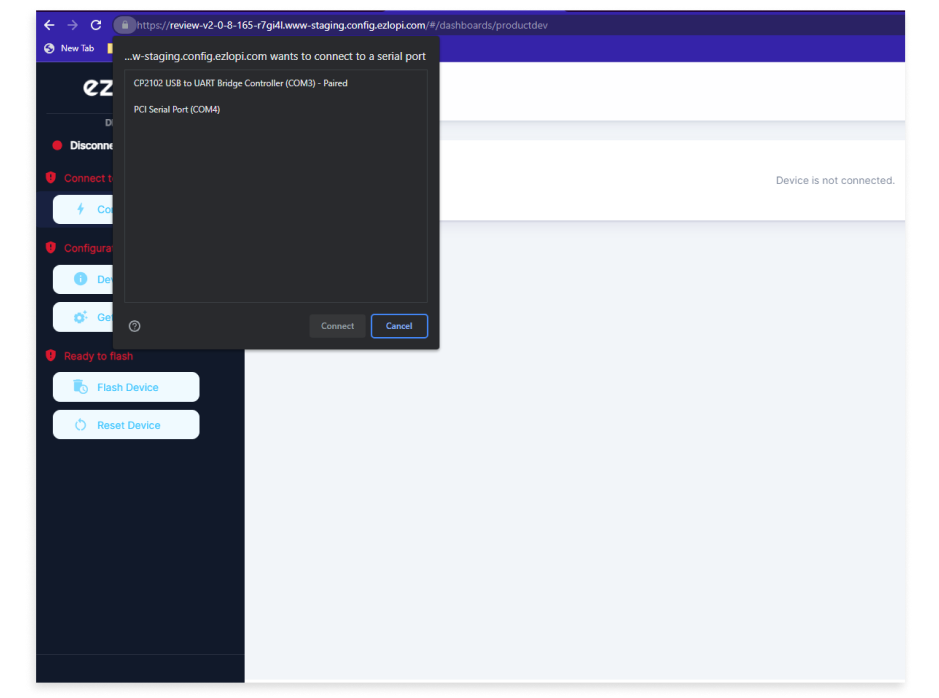
- Now, select COM Port to which your ESP32 device is connected. In our case, the COM3 port is used.
Click Connect
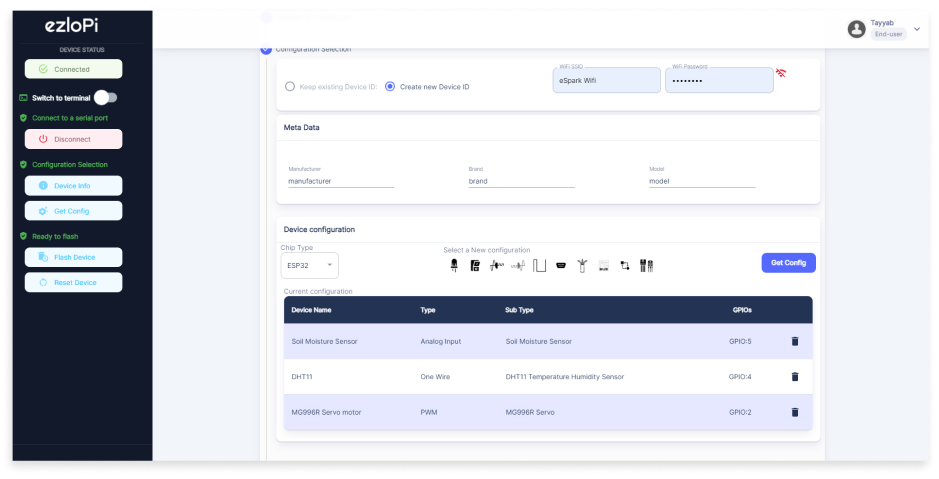
- If you are new to this and it’s your first time configuring, select Create new Device ID. Enter Wifi SSID and Wifi Password.
Interfacing the LED with EzloPi Web Flasher:
- In the Device Configuration, tab click on Digital Output.
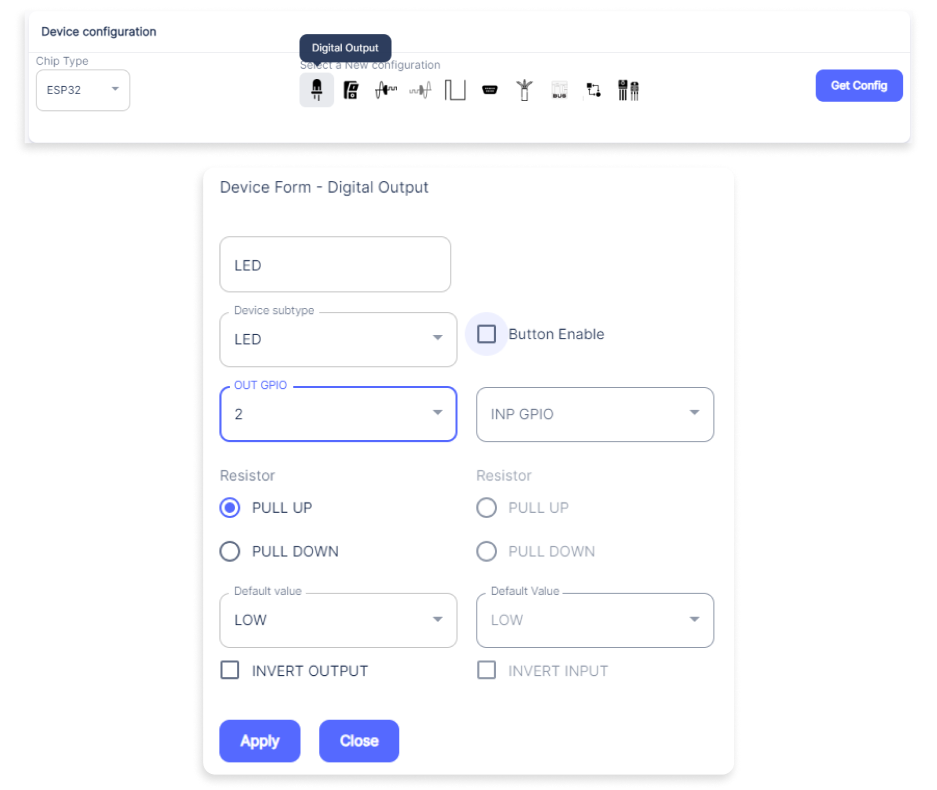
- A digital output window will open for inputting the following parameters:
- Set a device name of your choosing. In our case we set it to LED.
- Set Out GPIO to 2.
- Set Resistor to PULL UP.
- Set the default value to low
- Now Click the Apply button.
- After clicking the apply button you can see a table of your setting in the device configuration tab.
- Press the Flash Device button.
Interfacing the Soil Moisture Sensor with EzloPi Web Flasher:
- In the Device Configuration, tab click on Analog Input.
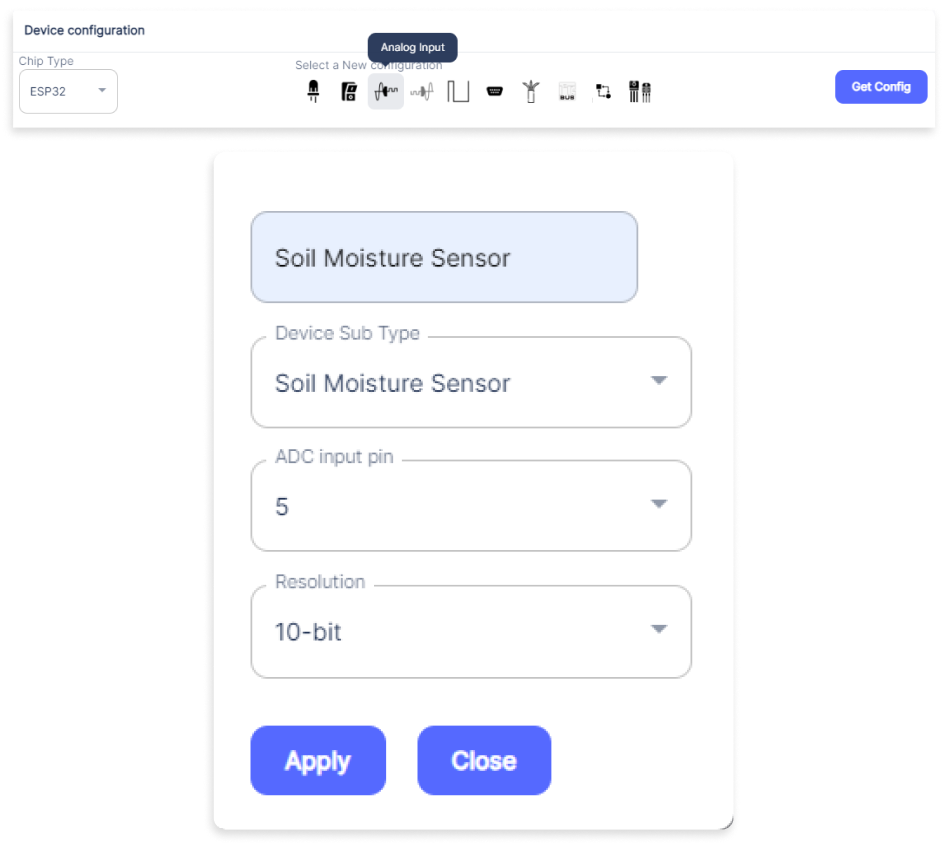
- An Analog Input window will open for inputting the following parameters:
- Set a device name of your choosing. In our case, we set it to Soil Moisture Sensor.
- Set device Subtype to Soil Moisture Sensor.
- Set the ADC input pin to 5.
- Set the Resolution to 10-bit.
- Now Click the Apply button. After clicking the apply button you can see a table of your setting in the device configuration tab.
- Now Click the Apply button.
- After clicking the apply button you can see a table of your setting in the device configuration tab.
- Press the Flash Device button.
Interfacing the DHT11 with EzloPi Web Flasher:
- In the Device Configuration, tab click on One Wire.
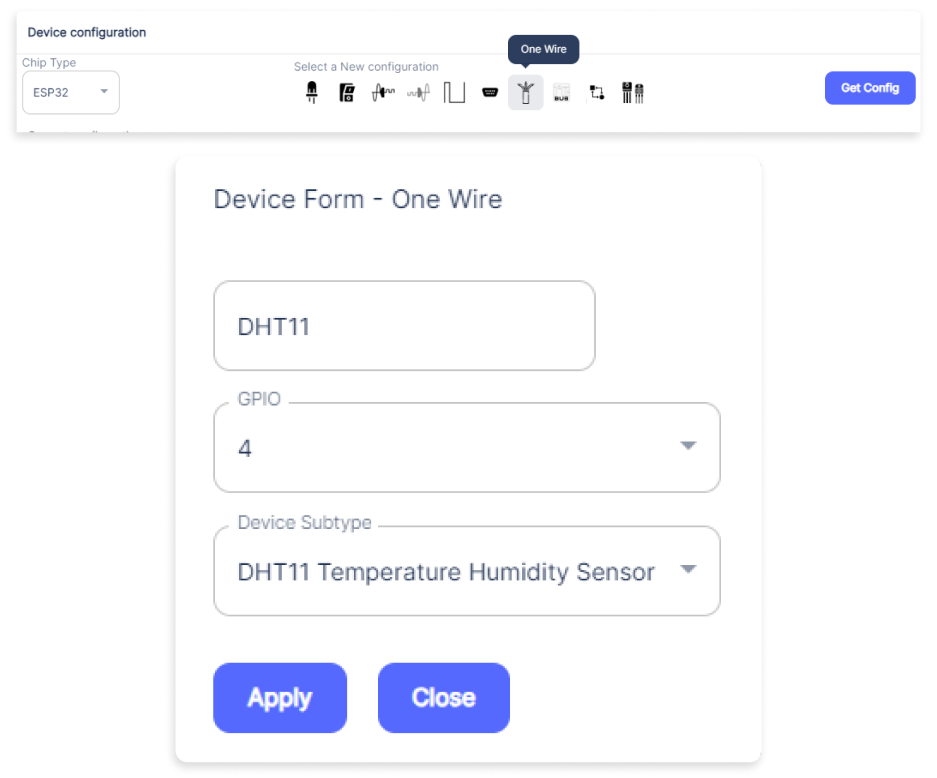
- A pop up window will open for inputting the following parameters:
- Set a device name of your choosing. In our case we set it to DHT11
- Set Out GPIO to 4.
- Select The Device Subtype as the sensor you are choosing. In our case, we set it to DHT11.
- Now Click the Apply button.
- After clicking the apply button you can see a table of your setting in the device configuration tab.
- Press the Flash Device button.
- A window will appear on the bottom right side of the screen displaying “Please press BOOT button while flashing begins.”
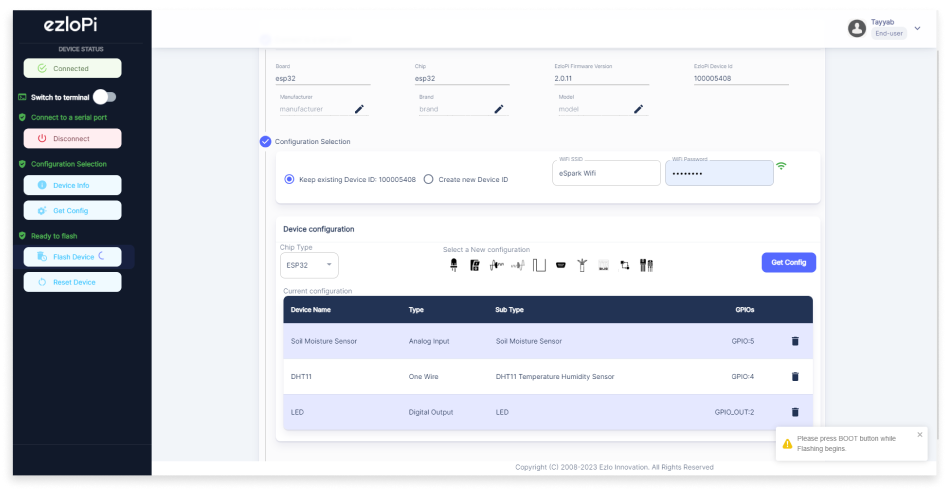
- Hold the BOOT button down until the next window appears on the bottom right side of the screen which says “Installation prepared. Please release the boot button now.”
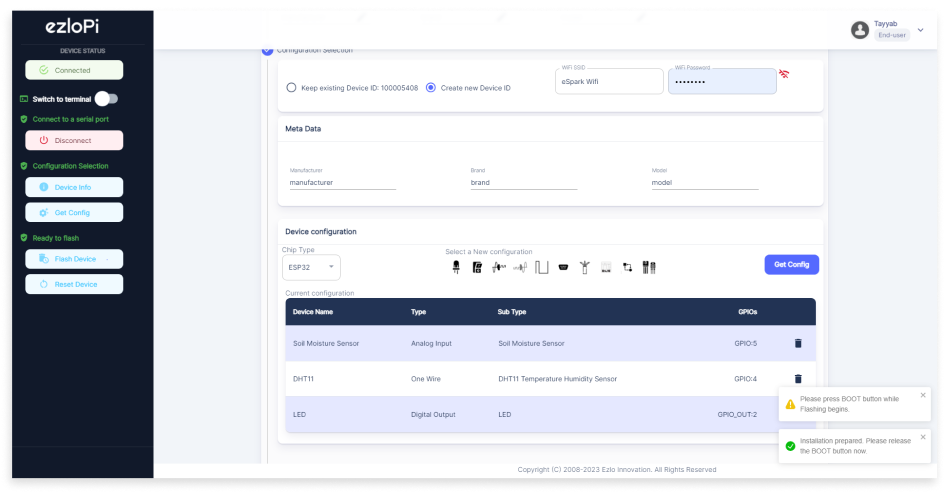
- Release the BOOT button from your ESP32 when this pop-up on the bottom right window appears.
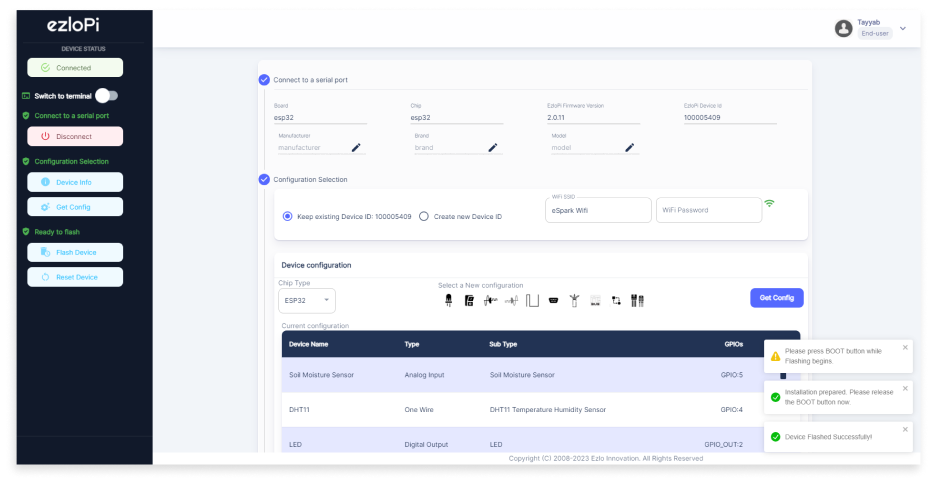
- After some time, a popup will appear saying Device Flashed Successfully! This means that your device has been set up successfully.
5. MiOS App
You can download the MIOS Android app from the Google Play Store and Apple App Store.
- After downloading the app, proceed to install the application and open it.
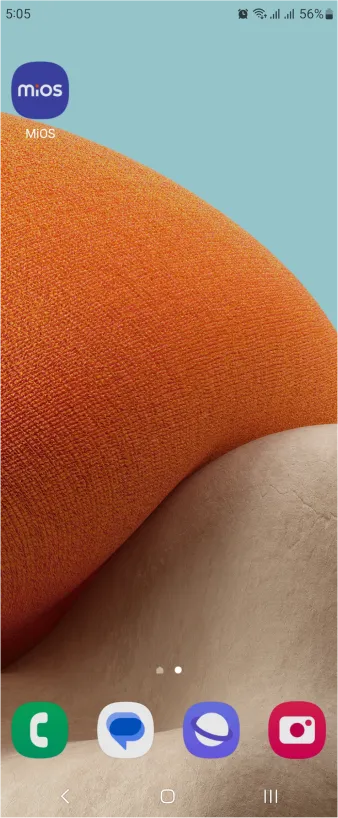
- Using the MIOS mobile application, create a new Ezlo Cloud account using the sign-up option. If you already have an account, you may proceed to log in.
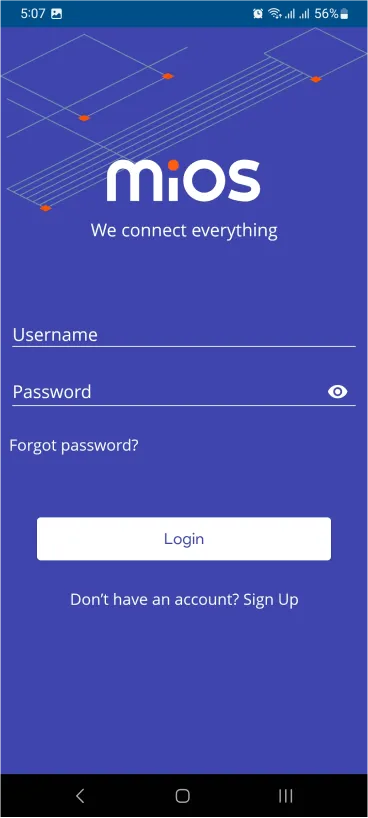
- After successfully logging in, you will be able to see the number of controllers connected such as a lamp, fan, or any other device in the MiOS app. Tap on any controller of your desired ID:
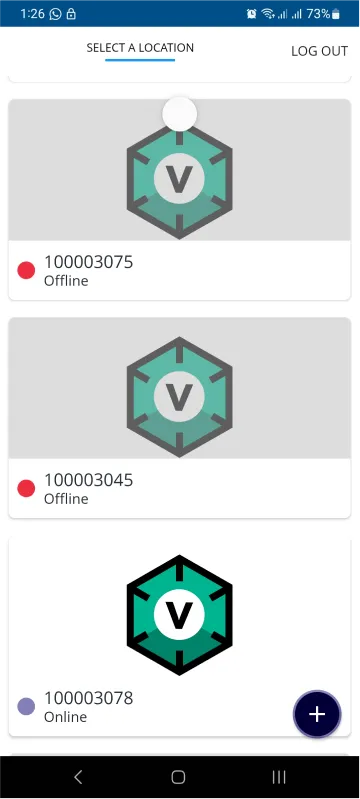
- You will be able to see the status of your controller whether it is online or offline. Access the device dashboard, and tap the device. The following view of the dashboard will appear:
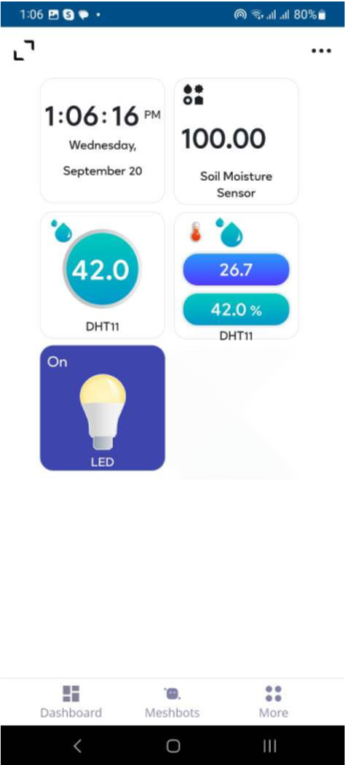
- After opening the MiOS mobile dashboard, we can see the tiles labeled for the “Soil Moisture Sensor”, “DHT11” and “LED”. We can monitor the soil moisture, temperature and humidity of the garden or plant anytime so that necessary actions can be taken when the soil moisture becomes very low. In our case, we are using LED as a demonstration which can be replaced with a water pump for a practical application.
- To explain better, assume that we are using a water pump in place of the LED. The water pump/LED can be switched ON/OFF remotely through the MiOS app interface. If soil moisture levels of a plant present in a room or an office space are low, the water pump/LED can be switched ON remotely.
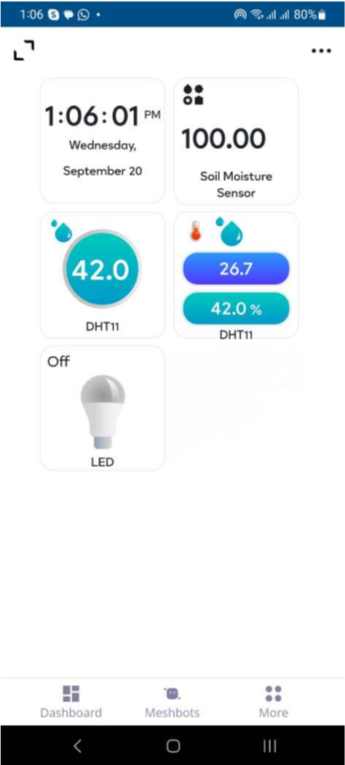
- Here, the LED is OFF, indicating that the moisture levels of the soil is under the specified thresholds.
6. MiOS Web Application
- After configuring the controller with the EzloPi web flasher, head to ezlogic.mios.com
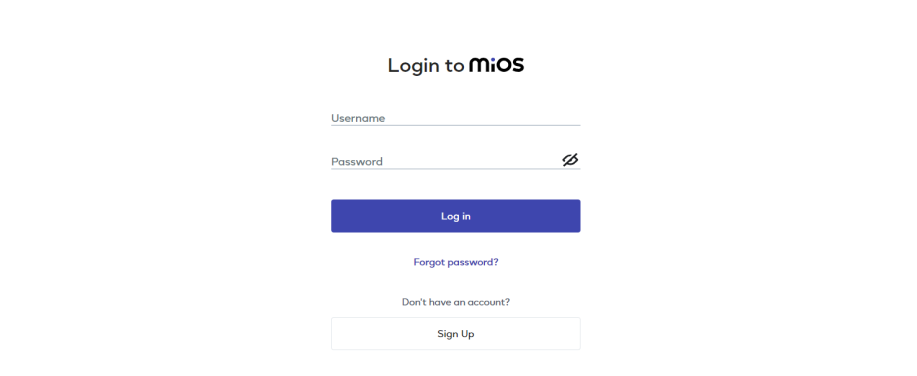
- Use the same credentials to log in that you used for configuring the controller with the web flasher.
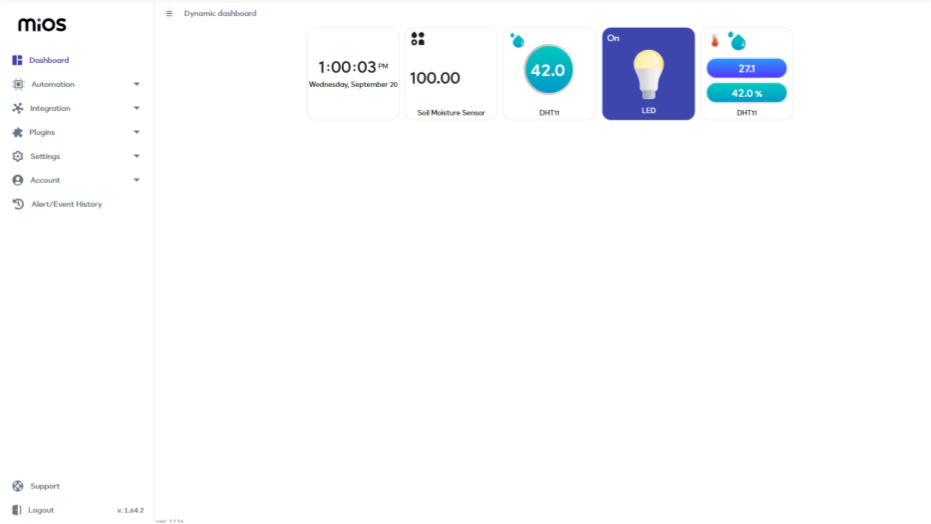
- As shown above in the web dashboard, we can monitor the soil moisture, temperature and humidity of the garden or plant anytime so that necessary actions can be taken when the soil moisture becomes very low. In our case, we are using LED as a demonstration which can be replaced with a water pump for a practical application.
- To explain better, assume that we are using a water pump in place of the LED. The water pump/LED can be switched ON/OFF remotely through the MiOS app interface. If soil moisture levels of a plant present in a room or an office space are low, the water pump/LED can be switched ON remotely.
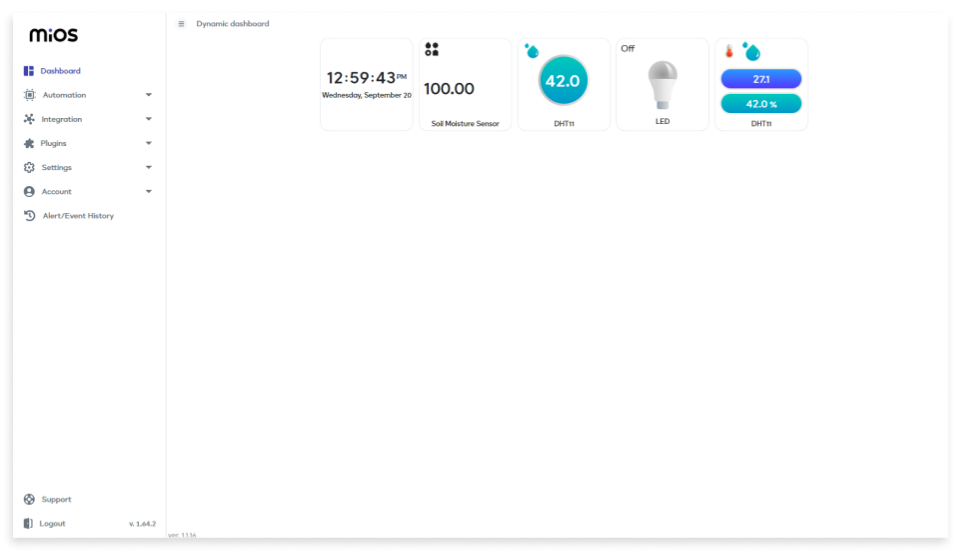
- Here, the LED is OFF, indicating that the moisture levels of the soil is under the specified thresholds.

eZlopie Products A single-channel 5V relay module $00.00

eZlopie Products Momentary switch $00.00

eZlopie Products Level Shifter Module (BSS138) $00.00

eZlopie Products ESP32
$00.00

eZlopie Products AC Lamp and Holder
$00.00











